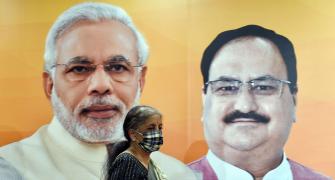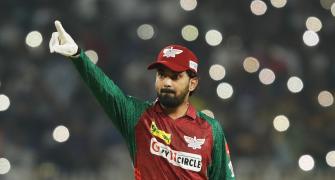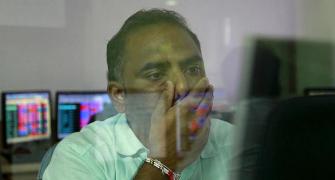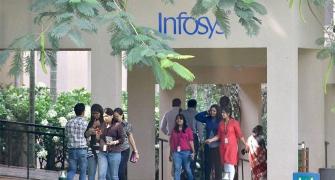10 per cent for those who earn up to Rs 30 lakh a year and 25 per cent for those who earn more, suggests T C A Srinivasa-Raghavan.
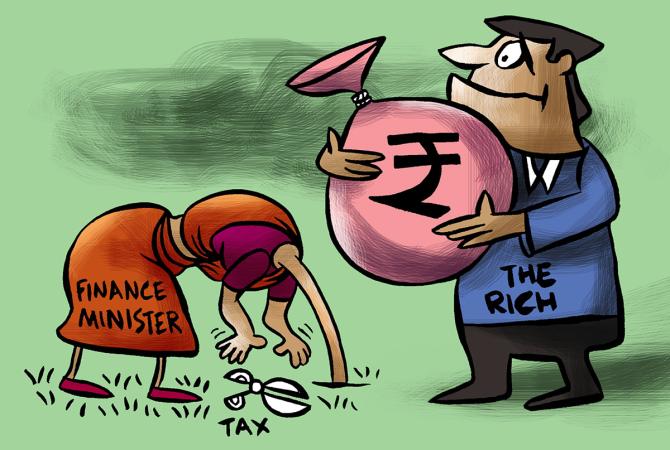
Business Standard's Budget encyclopaedic archivist A K Bhattacharya says India has had 29 finance ministers since 1947.
He also says that there has been only one finance minister, K C Neogy in 1949, who didn't present a Budget because he was in office for only a month. He left the Congress with Syama Prasad Mookerjee.
Three of these 29 finance ministers -- Nehru, Indira Gandhi and Rajiv Gandhi -- were prime minister also when they presented one Budget each.
Four finance ministers -- Morarji Desai, Charan Singh, V P Singh and Manmohan Singh -- went on to become prime minister.
There was one more Singh -- Jaswant -- but there have been six Tamils, so there!
However, only five of Nirmala Sitharaman's predecessors have had to deal with highly unusual circumstances. This article is about how they coped.
Briefly, four hit their way out of trouble. They changed the mood in the country dramatically for the better. Only the one in 1957 messed up.
I should add here that what Ms Sitharaman is coping with now is a crisis which in its intensity is the sum of all previous crises.
Crisis Budgets
1947: This first post-Partition Budget was presented on November 20, 1947. It was almost entirely devoted to the Railways! God knows what the government was thinking.
1957: This was the first post-Aavadi Congress Budget. The crisis was low growth, high inflation, and rapidly melting sterling balances.
To deal with it, the Congress decided at Aavadi to capture the 'commanding heights' of the economy and invest in heavy industry. So it raised taxes steeply to fund the Second Five-Year Plan.
1970: This was the first Budget after six major crises: The 1962 War with China, the 1965 War with Pakistan, the two droughts of 1965 and 1966, the devaluation of 1966, and the Congress split in 1969. So in 1970, Prime Minister Indira Gandhi presented her only Budget.
It was a bluprint for a huge expansion of the State's involvment in the economy. This completely changed the mood of the country. The voters were very happy that the rich were being soaked.
1985: This Budget came after the brutal assassination of Indira Gandhi in October 1984. V P Singh, as finance minister, cut taxes and tariffs, eased industrial licensing, and shyly looked to the markets for efficient resource allocation. He also went in for massive deficit financing, which resulted in the BoP crisis of 1991.
1991: This was the first post-BoP crisis Budget in which the finance minister, Manmohan Singh, devalued the rupee massively, mostly abolished industrial licensing, and slashed export subsidies.
Customs duties and excise duties both were cut, direct taxes were rationalised, and foreign investment was given an unmistakable come-hither invitation.
The mood turned euphoric.
Now what?
A similar opportunity has once again arisen for the 2021 Budget to change the disk-operating system of the country. It must not be missed.
The starting point, I think, has to be to restore to the Budget its economic aspect, which it lost in 1970.
Redistribution must cease to be its focus because that's what has turned it into an instrument of politics, and a failed one at that.
To change the basic approach, the government must explicitly recognise that a country needs the rich and the well-off because it is they who spend, save, and invest.
The post-1970 persecution of these drivers of growth must stop once and for all. Towards this end, the personal income tax must be reduced, just as corporate income tax has been.
Let me also give you an absurd and shameful statistic here. Revenue from corporate taxes is only a whisker more than revenue from personal income tax. The ratio is 52 and 48 per cent.
Not just this: Whatever revenue the government gets from personal income tax, about Rs 6.4 lakh crore budgeted this year, it spends more than that on paying the salaries of its largely negative productivity employees and the pensions of persons who, by definition, contribute nothing.
What's worse, it borrows heavily to pay these bills. Talk about crowding out.
The forthcoming Budget, if it wants to rekindle growth on a sustained basis, must leave far more income in the hands of the rich and well-off than it does now.
We must have just two rates of income tax: 10 per cent for those who earn up to Rs 30 lakh a year and 25 per cent for those who earn more.
If Manmohan Singh could exhort us in July 1991 to forget about the East India Company, Ms Sitharaman needs to forget about Nehruvian taxation.
Feature Presentation: Rajesh Alva/Rediff.com



